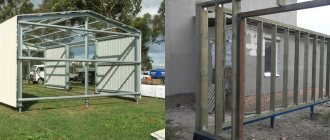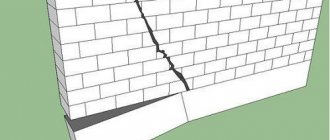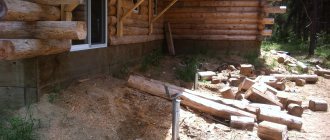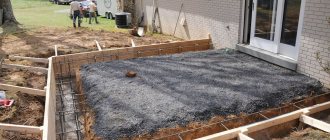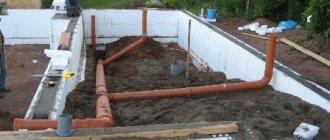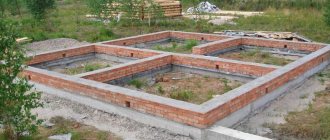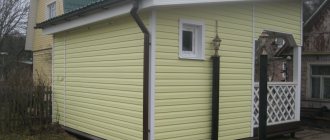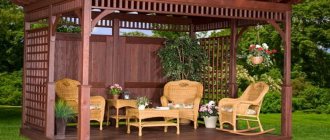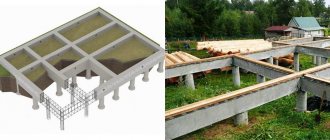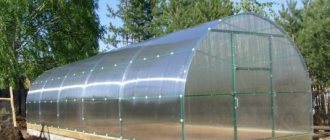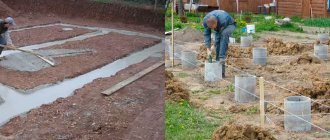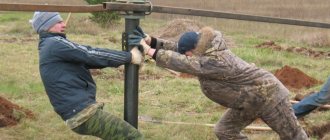As a rule, when making a strip foundation in a house, the floors are laid on the ground. At the same time, there are several technologies for their implementation. The choice of one option or another depends on the preferences of the owner and operating conditions. Thus, the facing flooring can be laid on a wooden base, concrete screed or monolithic slab. When choosing the option with a slab, it is either connected to a strip foundation, or a floating screed is made, which in turn can be dry or self-leveling.
What is it: concept, application, device
The installation of floors on the ground on a tape is a monolithic concrete screed, which helps prevent heat leakage and reliably serves for a long time.
This solution is relevant for any type of soil . The created concrete or dry screed is in no way connected to the foundation, and therefore does not experience loads from load-bearing walls or roofing.
Floors on the ground will be an excellent solution for a modern energy-saving house, which is equipped with a “warm floor”.
The damper layer, for which slab-type insulation is used, is installed so that the floor screed does not come into any contact with the base tape, which provides additional strength to the floor structure.
Features of the floors of the first floor
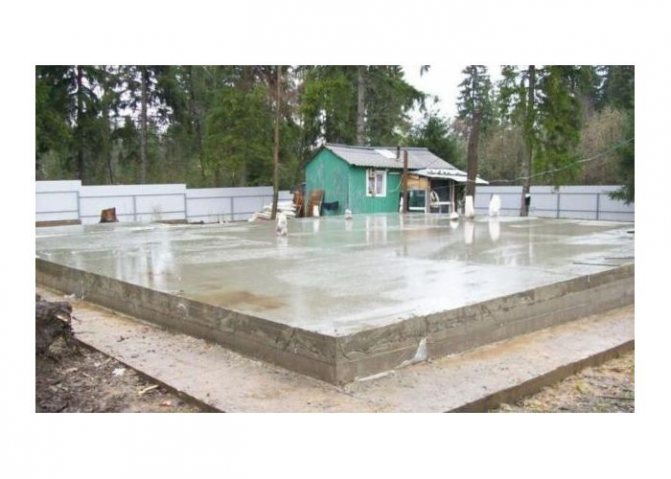
To speed up the construction of a house on a strip foundation, a reinforced concrete slab is used to install the floor of the first floor
To speed up the construction of a house on a strip foundation, a reinforced concrete slab is used to construct the floor of the first floor. It will be the basis for creating the future floor in the house. This slab lies at a short distance from the ground, which will not freeze under the house even in the most severe frosts. Such soil is saturated with moisture and radon, so it can transmit dampness to the slab and emit radon.
In this regard, ventilation holes must be made in the basement of a house on a strip foundation to naturally ventilate the concrete slab and protect it from destruction by dampness. These holes should not be closed even in winter. On such a concrete slab, you can make a traditional floor with insulation and use any thermal insulation and finishing materials.
However, if the house uses a low base, then there is not enough space for proper ventilation. In winter, these holes may be completely covered with snow. In this case, the floor is laid on the ground.
Installation of floors in wooden houses
Advice: since it is necessary to lay utility lines under the house, to facilitate their maintainability it is better to lay duplicate sleeves of all networks under the floor at the construction stage. This will allow you, if the main pipeline becomes clogged or fails, to connect to backup networks and not tear down the screed or other floor base to repair the networks.
Advantages and disadvantages
This design has a number of advantages. The following are distinguished:
- does not require large financial costs;
- withstands significant mechanical loads;
- does not increase the load on wall structures;
- can be easily repaired and lasts a long time;
- suitable as a base for any finished floor option;
- allows you to install a “warm floor”.
A fairly simple solution to construct can answer a number of basic tasks during the construction of a building. However, you need to take into account some nuances:
- requires high-quality insulation;
- not suitable for large backfill layer thicknesses (it cannot exceed 60 cm);
- the floor is dependent on the groundwater level - not recommended for use in areas where it is high.
In addition, the floor on the ground requires a serious approach and attention to detail. However, existing technologies are well established and, if strictly followed, problems usually do not arise.
The depth of the aquifer can affect the condition of the finished floor, so the area must be surveyed first.
Foundation backfill technology
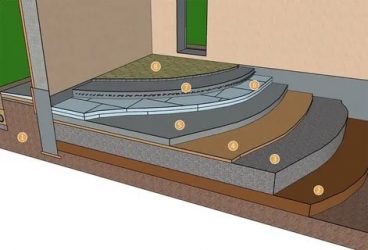
Backfilling the foundation is designed to provide additional waterproofing. It prevents the floor from rotting and condensation. When performing this procedure, the load on the plinth, base and basement should be taken into account: they must withstand not only the weight of the room, but also the pressure on the soil of the wall.
- Pile. It is a bunch of metal pillars.
- Tape. It is poured under formwork along the entire perimeter of the building and has a number of advantages compared to pile formwork: long service life, durability, strength and excellent thermal insulation properties. A monolithic strip foundation is poured inside under the screed, and then the entire surface is filled with concrete.
- Grillage. A combination of budget price and strength: concrete is poured under the columns, thereby strengthening the structure. Medium density sand is suitable here.
The right “pie”: layer-by-layer guidance
If wooden subfloors do not require much effort - a sand backfill with a layer of geotextile is enough for them, then for a concrete screed you will need to create a more multi-layered “pie” .
Experts advise reinforcing the finishing layer, as this helps prevent cracking after hardening. In the finishing layer you can place communications of the “warm floor” system.
Experts recommend following this technique:
- The first layer is compacted sand.
- Next, a gravel cushion is poured.
- A reinforcing mesh is installed, which can be made of either fiberglass or metal.
- A ten-centimeter layer of concrete mortar is poured.
- A waterproofing layer is created.
- A layer of insulation is laid, for which expanded clay or penoplex, or other insulating materials can be used.
- Another layer of waterproofing is laid.
- A clean concrete screed is poured.
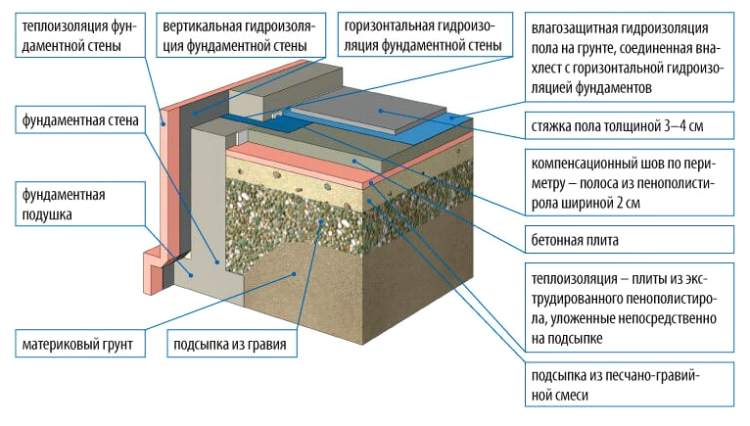
The last layer of the “pie” can hide any utilities, for example, sewerage or water supply , but it is recommended to provide a backup system that will help avoid destruction of the concrete layer when repair work is required.
Preparing for work
The preparatory stage includes studying the soil on the site, calculating the depth of the aquifer and possible fluctuations throughout the year. It is necessary to provide the building with a drainage system, thanks to which moisture from the ground will drain to a safe distance.
During the preparation process, the thickness of the backfill is calculated. The sand and gravel cushion should have good density, and the greater the thickness, the more difficult it is to compact the layer.
Experts recommend carrying out the rough screed over geotextiles , this way the concrete solution will retain moisture, which is needed to ensure normal hardening. If pouring is carried out on the preparatory layer, it will absorb moisture, which will ultimately weaken the strength of the resulting screed.
The amount of shrinkage of the preparatory layer is usually proportional to the selected thickness.
Before starting work, it is recommended to introduce all communications that will be located below floor level; at subsequent stages this will be much more difficult to implement.
When pouring concrete layers, it is necessary to withstand the entire hardening layer in order to prevent deformation or complete destruction in the future. Otherwise, there is a risk that the overall pie will lose strength or geometry defects will appear.
How to fill the space inside the foundation
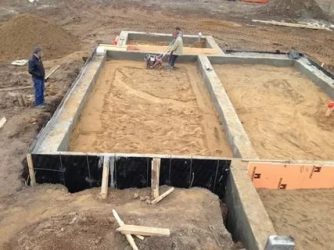
Before starting construction work when building a house on a site, many people are concerned with the question of how to fill the foundation inside. The correct choice will determine the strength of the concrete foundation, the shrinkage time of the building, as well as the durability and service life of the house. Before starting construction work, you need to find out at what level the groundwater flows, this affects the degree of soil shrinkage. The choice of backfill material is determined by the financial situation of the customer.
Technology of backfilling the foundation inside
After the foundation is poured with concrete, you should wait a couple of weeks. It takes time and good weather conditions for the concrete to harden and become dense. Then the base of the house is erected, and after that the backfill work can be carried out. The soil that is dug from the pit is usually used. During the period of pouring concrete blocks, it should be protected from foreign impurities that may begin to rot inside the foundation. To do this, the soil is covered with an awning or plastic film.
How to do it yourself?
There are three main methods for creating floors on the ground if the building was erected on a strip foundation. Each of them has its own advantages and nuances, but they all have good load-bearing capacity.
Wood flooring
The simplest method that requires the least financial costs . To support the structure, you will need columns placed on the surface of the ground so as to create a support system for wooden logs.
Expanded clay must be poured between the posts; sometimes you can leave the space empty, but then you will need holes for ventilation.
The logs must be leveled so that the plane of the supports is absolutely level , after which the subfloor is laid. A film is placed on it, providing vapor and waterproofing, and a standard substrate.
Laminate, linoleum can be used as a final floor covering, or a floor made from a material at the owner’s request can be installed.
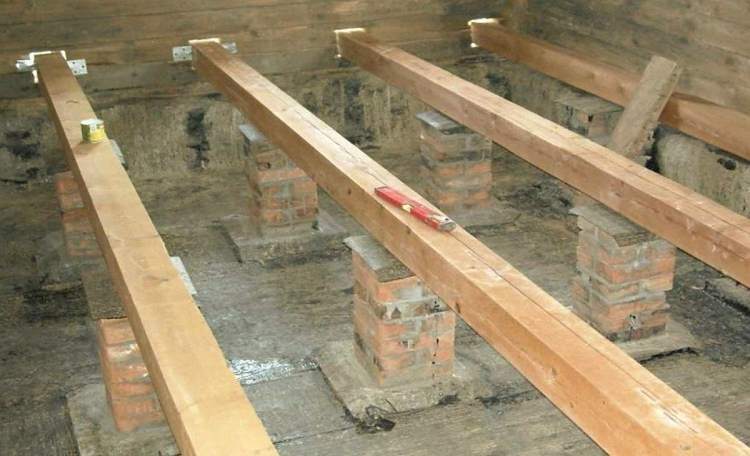
Dry screed
This option provides good results in the shortest possible time. Work required:
- A sand and gravel cushion is poured, where the components are arranged in layers twenty centimeters thick, carefully compacted, after which a sheet of geotextile material is laid on them.
- A reinforcing mesh is installed onto which the concrete mixture for the rough screed is poured.
- The next layer is a waterproofing film - the canvases are placed ten to fifteen centimeters above each other, the joints are sealed with construction tape, the edges are brought out onto the wall to a height of twenty centimeters.
- Plaster profiles or other structures are installed that will act as beacons allowing the formation of a flat surface.
- Expanded clay is poured in and leveled according to the previously installed beacons.
- The subfloor is being installed. Drywall or plywood sheets are used for it. Experts consider tongue-and-groove plasterboard to be the most suitable, which is reliably connected into a single sheet thanks to a special profile.
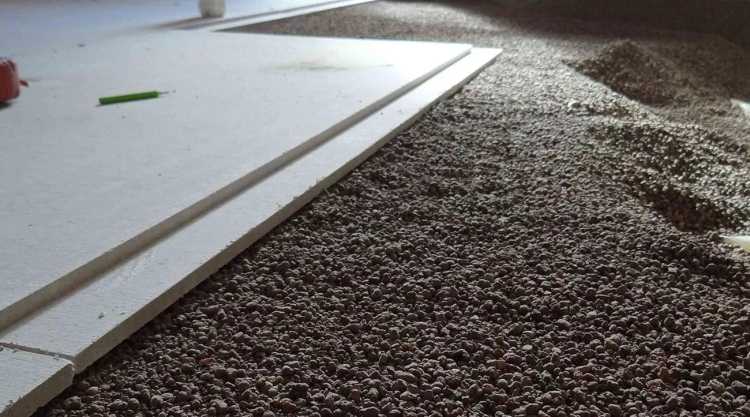
Next, all that remains is to install the finished floor covering, using any materials that the owner likes - from laminate to tiles.
Concrete screed
This method turns out to be more labor-intensive than others. It is recommended to use it if the air temperature does not drop below five degrees, the sun will not shine on the surface, and the site is prepared for work.
The screed algorithm is as follows:
- About ten to twenty centimeters of sand are poured out to create a pillow. The layer can be larger, but not exceed 60 cm. Compaction is carried out for maximum density, for example, like on a well-traveled road.
- A layer of gravel or crushed stone is formed on the resulting cushion, the thickness of which is similar to that of sand. Compaction is being carried out.
- The geotextile fabric is laid overlapping, with an overlap of fifteen centimeters. The same is done on the foundation walls.
- A damping layer is installed around the perimeter.
- Reinforcement is carried out with a special mesh of fiberglass or metal reinforcement, after which the concrete composition is poured. Now you will need to wait until the mixture completely hardens.
- Waterproofing is being installed. Suitable as roofing felt in combination with bitumen mastic, or modern impregnations.
- A layer of insulation is laid. Experts recommend penoplex, as it is dense and copes well with loads.
- A steam-waterproofing film is placed with an overlap on the walls. Overlap up to fifteen centimeters, on walls - up to twenty. All joints are sealed with construction tape.
- A reinforcing mesh is installed for finishing pouring. The concrete layer does not exceed ten centimeters.
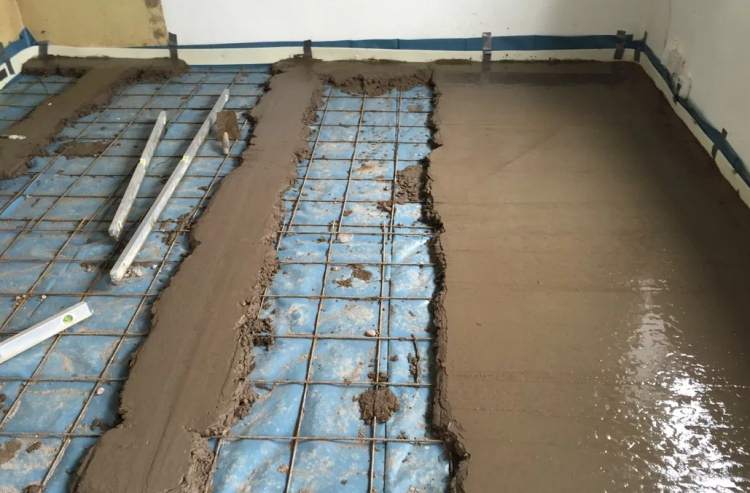
If the owner of the building has planned to install a heated floor, then pipelines and other necessary communications are laid before pouring concrete. It is necessary to make sure that all connections can withstand the load and are made with the required safety margin.
Tips from the experts
To avoid adverse consequences, you should remember some points:
- drainage protection protects against excess moisture, which cannot be avoided after melting snow or heavy rainfall;
- a floating concrete screed not fixed to the foundation will help you forget about the negative aspects associated with soil shrinkage;
- The geotextile fabric does not allow the sand cushion to absorb moisture from the concrete, which ensures complete hardening of the layer.
